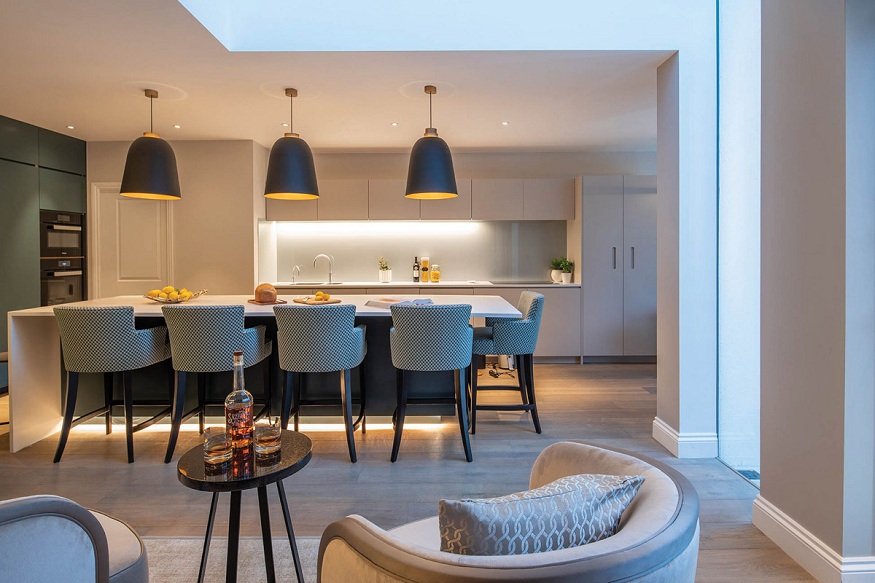The humble window often gets overlooked in renovation plans, yet these architectural features influence everything from natural light patterns to privacy levels and temperature regulation. While structural changes command big budgets, window treatments offer dramatic transformations at a fraction of the cost. The right dressing can redefine a room’s entire character.
What makes window treatments so impactful? Unlike permanent fixtures, these adaptable elements can change a room’s mood from formal to casual, dramatic to subtle, or closed to open: often through simple adjustments rather than complete replacements.
For those wanting professional guidance, consulting an interior designer West London homeowners recommend brings fresh perspective to window possibilities.
1. Strategic Light Management
Windows connect us with outdoor environments while creating interior light patterns that define our experience of spaces. Thoughtful window dressings control this relationship in sophisticated ways, turning harsh glare into gentle illumination or creating dramatic shadow play across surfaces.
The positioning of treatments dramatically affects light distribution throughout rooms. Hanging curtains higher and wider than actual window frames, for instance, creates an illusion of larger windows while allowing maximum daylight.
2. Solving Architectural Challenges
Well-chosen window treatments cleverly disguise less-than-ideal features:
- Awkwardly positioned windows: Floor-length drapes hung at uniform heights throughout a room create visual harmony even when windows sit at different levels. This technique establishes consistency that draws attention away from architectural irregularities while maintaining a cohesive design language.
- Disproportionately small openings: Extending treatments significantly beyond actual window dimensions creates an illusion of grander scale. The expanded visual footprint makes modest windows appear considerably larger, instantly upgrading rooms that suffer from limited architectural interest.
- Uninspiring views: Sheer layers filter less-than-scenic outlooks without sacrificing natural light. These translucent fabrics transform ordinary or unattractive views into softly diffused light sources while maintaining privacy and visual comfort.
The right treatment can transform problematic features into design assets through thoughtful concealment or strategic enhancement.
3. Fabric Choices That Alter Room Perception
Textiles play crucial roles in spatial perception and atmospheric quality:
- Heavyweight fabrics: Materials like velvet and lined damask instantly add formality and richness to spaces. Their substantial presence creates acoustic-dampening properties that transform echoing rooms into intimate, comfortable environments while providing excellent light-blocking capabilities.
- Sheer or lightweight options: Gauzy fabrics generate ethereal, breezy atmospheres that expand visual space. These delicate textiles filter light beautifully while maintaining airiness that prevents small rooms from feeling crowded or claustrophobic.
- Patterned selections: Strategic pattern choices draw the eye upward, emphasizing ceiling height and vertical dimensions. This visual trick elongates walls and creates perceptions of grander proportions without structural modifications.
The texture, weight, and visual qualities of window fabrics contribute substantially to how spaces feel beyond mere decorative impact.
4. Layering for Maximum Impact
Combining multiple treatment types creates transformative flexibility. Blinds with drapery is a classic pairing that allows precise light control while introducing softness through fabric elements. The combination offers exceptional versatility, transitioning from complete privacy to filtered light or unobstructed views as needed.
Layering translucent and opaque fabrics provides options ranging from gentle light diffusion to total room darkening. This approach allows spaces to serve different functions throughout the day without compromise.
Thoughtful layering allows windows to respond to changing needs throughout days and seasons, transforming rooms on demand rather than remaining static elements.
Conclusion
With thoughtful selection and placement, window treatments deliver room transformations that rival major renovations at a significantly lower investment. Their impact extends far beyond decoration into functional, emotional, and practical realms that fundamentally alter how spaces feel and function.


